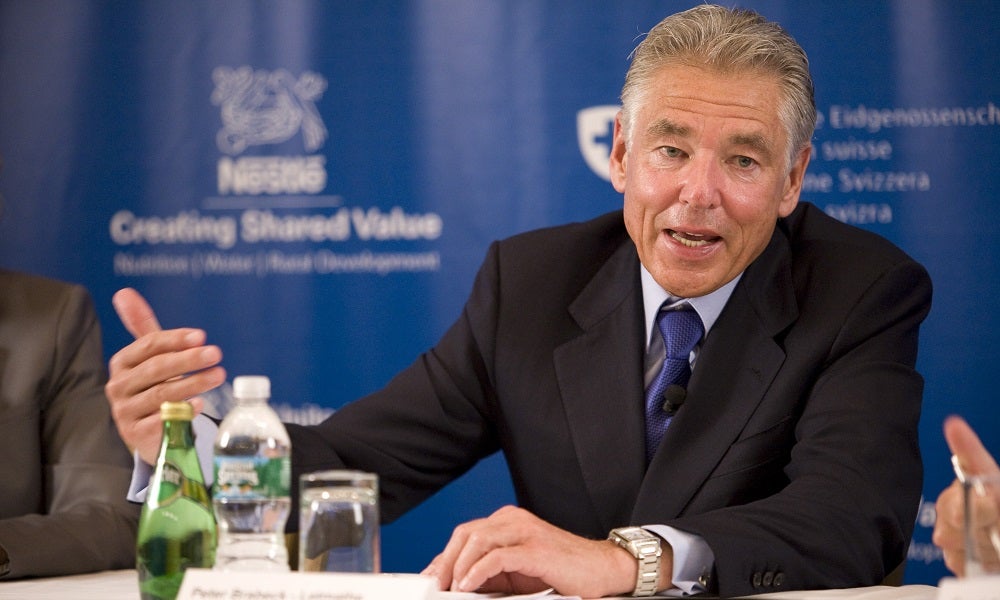Amazon’s prime movers face a tricky transition
Jeff Bezos will find the move from CEO to Chairman of the Board far from easy. IMD Business School's Didier Cossin and Michael Watkins provide advice on avoiding the pitfalls
This article is republished with permission from I by IMD, the knowledge platform of IMD Business School. You may access the original article here.
As Jeff Bezos is soon to learn, the qualities that make a great CEO do not necessarily make a great Chairman of the Board (hereafter Chair), even when a leader like Bezos has previously played both roles. As Andy Jassy takes the helm as CEO of Amazon, Bezos would do well to reflect on how focusing purely on being Chair is quite a different game.

For a start, it's not easy to give up the CEO role and focus exclusively on being Chair. Why? Because many CEOs struggle to stop wielding executive power and "over-manage" the new CEO, setting up potentially dysfunctional battles over influence and decision-making. This is not surprising, given that executive ability and the need to "run the show" is what gets CEOs to the top in the first place. That's why many corporate governance experts consider it inadvisable to move from CEO to non-executive Chair in the same company.
However, some great Board Chairs (think of Peter Brabeck at Nestlé) have successfully navigated this transition. These leaders have the flexibility to shift roles and avoid falling into the control trap. Every executive becoming non-executive Chair needs to learn to let go while remaining ultimately responsible. This is, for example, something that Phil Knight struggled with in working with his first CEO at Nike, William Perez. He subsequently made it work with Mark Parker, who became the long-lasting CEO (and is now Chair).

However, there is a second, more subtle reason why CEOs often struggle with the transition: success in the role requires a very different set of leadership skills. The implication is that great CEOs can be mediocre Chairs and, interestingly, average CEOs can be great Chairs. Indeed, some who barely made the CEO job came into their own leading the Board.
Understand the qualities of great chairs
Moving from an executive to a governance role requires a different style altogether, one which allows for support, supervision, and co-creation while jointly setting high-level objectives. Based on our research and extensive experience, great Chairs are:
Able to subordinate their egos. Effective Chairs accept that the CEO is the company's public face and are willing to cede the limelight to operate effectively in the background. Another reason why this is important is that Boards tend to work better when members feel that they are roughly on the same level. This means that effective chairs operate more as first-among-equals and less as "leader-in-charge."
Graceful in the exercise of power. Effective Chairs have authority but rarely resort to using it. This is important because most legitimate authority comes from the Board as a body rather than from any individual. They act as agenda-setters, promotors of constructive dissent, builders of authentic consensus, and the voice of the Board, and not as authoritative leaders.
Read more: Succession planning checklist: 7 ways Boards can hire the right CEO
Dedicated to ensuring success in the long run. They keep the management team focused on the one to five-year time frame, and the Board focused on the five to 10-year time frame or beyond. Some can even have a 25 year, cross-generational focus (for example, in family businesses and sovereign wealth funds).
Stewards of their companies. Effective Chairs embody and defend the core values of their organisations. They set the tone on the Board, steer the development of the vision and strategic framework, shape the culture, and establish the constraints within which the CEO can operate. They thrive for continuous improvement and rejuvenation of skills on the Board and beyond to ensure adaptability and agility for long-term survival.
Able to work in tandem with the CEO. They understand that the CEO and the Chair should be complementary roles, not competing ones. They establish boundaries (more and more in writing to ensure clarity) and empower the CEO and the management team to operate within them. They monitor the CEO's performance (at least via the appropriate committees) and act as a sounding board. Critically they foster the trust and rich communication required to make the role split work.

Make the right role decisions
Chairs are, of course, not all alike, and neither are the circumstances they face. The implication is that the Chair needs to be thoughtful in deciding how to play the role. Three key decisions are whether to:
Supervise or support. Of course, every Chair needs to monitor the CEO's performance through appropriate reporting, auditing, and supervision. But they need to explicitly decide whether, to what extent, and how they will provide support in the form of coaching and/or mentoring. Indeed, depending on the context the organisation is in, simple, complex, or chaotic, and depending on the readiness and maturity of the CEO, the Chair needs to tune his or her role.
Be passive or active. The relationship between the Chair and the CEO is quite different if the Chair enacts an active role in the company. Being active can mean representing the company in dealings with external stakeholders in ways that the CEO cannot, connecting with the parts of society that are less on the radar screen of the management team, or simply less reachable. Critically, however, it doesn't mean engaging as an immediate decision-maker.
Focus more on the inside or the outside. Given limited time, where should the Chair focus his or her attention? If an internal strategy is well established, a restructuring is required, or a culture transformation underway, the Chair will focus more on internal issues, engaging in supervision or support depending on the need. In a well-aligned, finely-tuned organisation, the need to deal with external issues related to technology, regulation, political instability, and social transformation will lead the Chair to have more outside focus.

Manage the transition
Like all challenging transitions, it's essential to get off to a strong start. Here are some things new Chairs can do that help:
Require world-class transition support. To make the process of shifting roles as efficient and effective as possible, both the new Chair and the CEO must have an excellent transition support process. This includes gaining alignment on roles, setting ground rules and operating principles (for example, concerning escalation and communication.)
Get a mentor. If the CEO's job is lonely, the role of the Chair is lonelier still. By the nature of the role, the Chair cannot develop trusted-advisor relationships with members of the executive team or with key external advisors who work with the company. Advice from experienced Chairs is invaluable in helping to avoid common traps, make sound decisions, and navigate Board politics through the transition and beyond. Mentors need not come from within the same industry or region.
Cultivate a network of advisors. Considering the small size of their team, the successful Chair relies on expert advice on board renewal, strategic reviews, M&A, and more. He or she is keenly aware of advisors' potential conflicts of interest and finds ways to manage them to serve the firm better. Great Chairs often rejuvenate their Board to ensure skills are fresh and focused. One Chair of a 200 billion+ company told one of us he was rotating the HR consultant for Board search every two to three years, as "the advisor very soon starts playing his own game in board nominations". Another chair recruited a famous investment bank solely to help with the mechanics of a successful 70 billion transaction but still used extensively the advice of a niche firm (fewer than 20 employees) with whom he had a trusted relationship.

Get and stay educated. Board work is evolving rapidly, and new best practices are being developed almost daily. Excellent governance has become a competitive advantage, and investors look at it more and more as a differentiator. It's therefore essential for Chairs to stay current on the latest and best thinking on core topics.
Ensure there is a best-in-class support system. The Board secretary has become a discrete but essential asset for large organisations. Rigorous, efficient Board processes have become critical to organisational resilience. Despite their relative isolation, Chairs must not be tempted by the do-it-alone syndrome. While your team has now extended far beyond the staff (and even beyond the Board members), the secretary is an excellent anchor to have within.
Understanding and embracing the requisite leadership, making the right decisions about roles, and managing the transition well doesn't guarantee that a CEO will move successfully to Chair. Not doing so, however, is a recipe for needless struggle and perhaps even derailment.
Didier Cossin, Professor of Finance and Governance at IMD, is the Founder and Director of the IMD Global Board Center, the originator of the Four Pillars of Board Effectiveness methodology and an advocate of Stewardship. Michael Watkins is a Professor of Leadership and Organisational Change at IMD. He is the author of The First 90 Days, Master Your Next Move, Shaping the Game, and numerous other books and articles on successfully taking new roles. Main photo: Amazon
